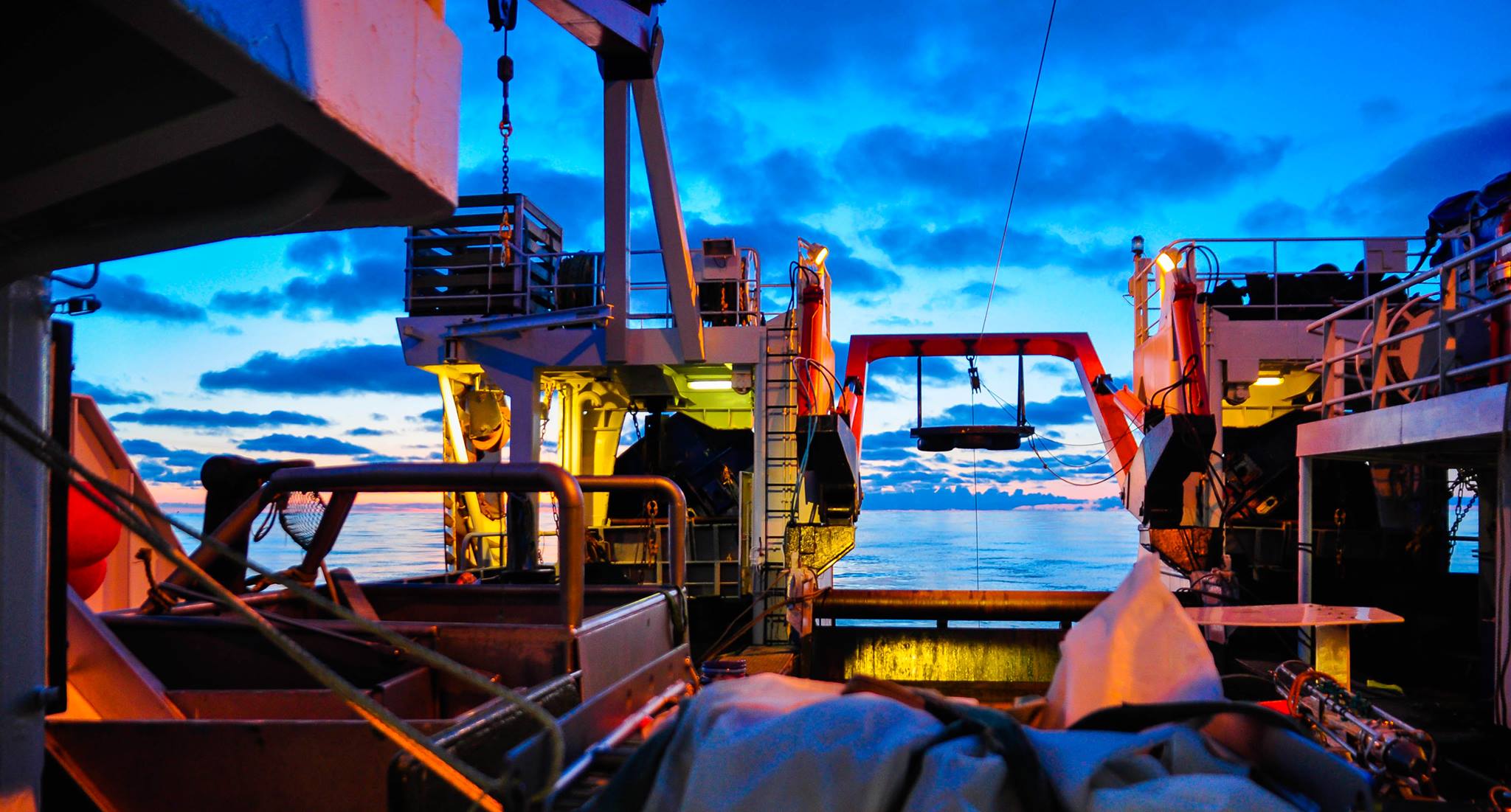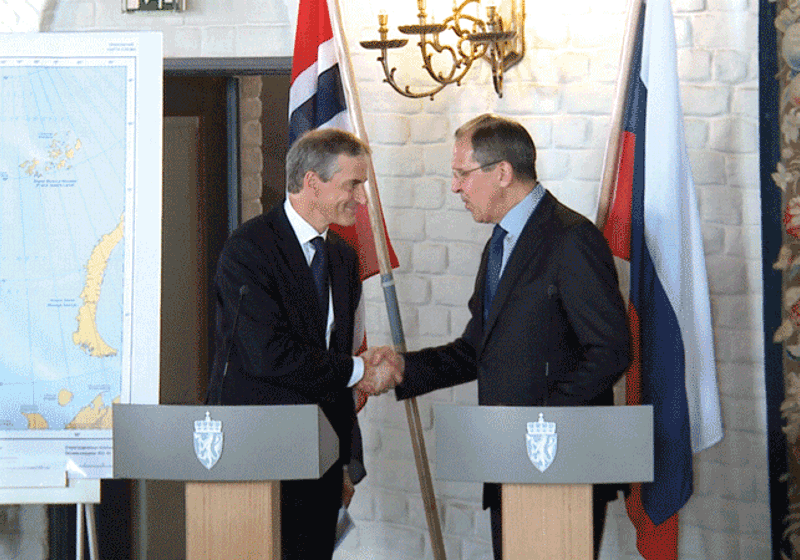Norwegian fisheries jurisdiction (Norway's Exclusive Economic Zone, The Jan Mayen Fishery Zone and the Fisheries Protection Zone around Svalbard) covers a total area of some 2,032 mill. km2 i.e. an area 5,3 times more extensive than the country's land territories. As our second biggest export industry (after the petroleum sector), fisheries are important to the livelihood for the country's coastal communities.
Norway takes a science-based approach to resource management. Sustainable management of fish stocks is a key objective. As a result of the efforts put into research, regulation and control, the fish stocks in the Norwegian Sea and the Barents Sea are among the best managed in the world.
The management of the marine resources - regulatory measures as well as enforcement of rules and regulations - is a national responsibility. At the same time, international cooperation is essential. The Joint Norwegian-Russian Fisheries Commission and the North-East Atlantic Fisheries Commission (NEAFC) are particularly important. In the High North as well as elsewhere, Norway is following closely the possible impact of climate changes on migration patterns of fish stocks. Science indicates that commercial fisheries in the central Arctic Ocean are not likely.
The most important fish resources in the Barents Sea and adjacent waters are cod, haddock and capelin. A number of other species are also harvested, such as Greenland halibut, prawns, redfish and king crab. Also minke whales and harp seals are subject to commercial exploitation. Major fish stocks such as cod and haddock have large migratory ranges, with spawning grounds in the south off the coast of North Norway. Herring spends its juvenile stages in the Barents Sea, but migrates south along the coast of Norway and into the Norwegian Sea as adults. The stocks of cod and herring are among the largest in the world, and the fisheries based on the resources in the Barents Sea are among the most important globally.
The 2010 Treaty concerning Maritime Delimitation and Cooperation in the Barents Sea and the Arctic Ocean between Norway and Russia established the maritime boundary between Norway and Russia in the Barents Sea and the Arctic Ocean. While the entire continental shelf falls under the jurisdictions of the two countries, the waters beyond 200 nautical miles are high seas, creating a “Loophole” of 62,400 km2 in the middle of the Barents Sea.
The Norwegian-Russian fisheries cooperation
The Norwegian-Russian cooperation on the management of these fish stocks takes place within a broad range of bilateral agreements, including the framework agreements of viz. 11 April 1975 and 15 October 1976, which also established a Joint Norwegian-Russian Fisheries Commission. The Commission meets annually to decide on total allowable catch limits (TACs) for shared fish stocks, based on scientific advice from the International Council for Exploration of the Sea (ICES), which includes both Norwegian and Russian scientists. This ensures that biological considerations are taken into account when the Norwegian-Russian quotas for the Barents Sea are determined. The quotas are based on a precautionary approach, and the objective is to ensure a high long-term yield. The Commission furthermore regulates the mutual access to conduct fishing operations in each other's areas of fisheries jurisdiction as well as the exchange of quotas of shared or exclusive fish stocks.
In terms of agreements reached within the Commission, the cod, haddock, capelin and Greenland halibut stocks are shared between Norway and Russia. The cod and haddock stocks are split evenly on a 50/50 basis, whereas the capelin is shared with 60 % to Norway and 40 % to Russia. For the Greenland halibut the shares are 51 % to Norway, 45 % to Russia and 4 % to third parties.
In 1992 Norway and Russia agreed to expand their cooperation on fisheries management and control, and in 1993 the Permanent Norwegian-Russian Committee on Fisheries Management and Control was established. Under this cooperation, a range of specific measures have been introduced to improve control of fisheries resources, In addition the parties agree on various technical measures on for instance mesh sizes, minimum sizes, the use of sorting grids in trawls and criteria for temporary closure of areas to fisheries when the intermixture of non-targeted species is too great. In 2010, considerable progress was made in harmonising regulatory measures for the fisheries on both sides of the maritime boundary.
The parties also make decisions on the framework of research cooperation. Marine research cooperation between Norway and Russia goes all the way back to the early 1900s, and was formalised in the 1950s. The results of this research form the basis for the management decisions made each year by the Joint Norwegian-Russian Fisheries Commission, and are therefore of crucial importance for the management of the joint fish stocks in the Barents Sea.
With regard to control matters, the parties have been particularly successful in their cooperation on dealing with the problems of over-fishing of quotas and the unregistered trans-shipment of catches in the high seas to third-party vessels. Such illegal, unregulated and unreported fisheries (so-called IUU fisheries), which were previously a major problem in the Barents Sea, have in recent years been largely brought to an end.
The total catch quotas that are set in the Joint Norwegian-Russian Fisheries Commission also include shares for third countries such as EU countries, the Faroe Islands, Iceland and Greenland. These allocations have previously varied, but in recent years the total allocations for cod fisheries by third parties have amounted to a fixed share of 14,15 % of the TAC. The total catch quotas have fluctuated widely over time, but in recent years the major fish stocks such as cod have grown to very high levels, with cod yielding a TAC of one million tonnes in 2013. The catch quotas apply to the entire migratory range of the stocks in question.
The trilateral "Loophole Agreement"
In May 1999 Norway, Iceland and Russia signed an agreement (the "Loophole Agreement") designed to bring an end to unregulated fishing for straddling stocks (primarily cod) in the enclave of waters beyond 200 n. miles, i.e. the high seas in the Barents Sea.
The effect of this agreement was to ensure that the total harvesting of the fish resources in the entire migratory range would not exceed the catch limits (TAC's) established on the basis of scientific advice from ICES.
In a broader perspective, the Loophole Agreement is also an example of direct cooperation between coastal and high seas fishing nations over the management of straddling fish stocks on the high seas which the 1995 UN Agreement on the Conservation and Management of Straddling Fish Stocks envisages as a possible alternative to management through a regional fisheries organization. The agreement provides a robust, sustainable and successful management regime, which could well serve as a model for other high seas enclaves.
The Fisheries Protection Zone around Svalbard
The developments in the law of the sea in the last decades of the 20th century brought extended coastal state jurisdiction, to 200 nautical miles. This was adopted into Norwegian legislation with the Economic Zone Act of 1976. In terms of the Economic Zone Act, Norway in 1977 established the Fisheries Protection Zone (715,312 km2).[1] The main purpose of the zone was to ensure the protection and sound management of the living resources, since this is one of the most important nursery areas for important fish stocks.[2]
The Fisheries Protection Zone is a part of the larger Barents Sea ecosystem. Catch quotas and other regulations are implemented by Norwegian legislation and enforced by Norwegian authorities. The regulations of the fisheries in the Fisheries Protection Zone have evolved over time into a comprehensive regulatory framework, which includes catch limitations and technical measures such as closure of areas with undersized fish.
For Norway, the wider objective of its management policies in the Fisheries Protection Zone (as well as in other waters under its jurisdiction) remains to facilitate, attain and safeguard the responsible and sustainable harvesting of the marine living resources. Thus, in step with the evolvement of contemporary international law, Norway has endeavoured to establish and maintain a robust and viable management regime.
Integrated Ocean Management
Norway takes an ecosystem- and science-based approach to sustainable resource management and economic activity. Integrated management plans that establish a framework for all activities in the relevant sea areas are among our most important tools. The last decade has seen the elaboration of such management plans for the
Barents, Norwegian and the North Sea. The first of these plans, the Barents Sea plan, was adopted in 2006 and updated in 2011.[3]
The purpose of these plans is to provide clear, predictable and operational frameworks for value creation through the sustainable use of resources and ecosystem services in the sea areas and at the same time maintain the structure, functioning, productivity and diversity of the ecosystems. Furthermore, the plans have been designed to identify measures which enable the authorities to reconcile the need for economic activity within petroleum industry, fisheries and maritime transport with the need to protect the marine environment. The keyword is co-existence within the parameters of sustainable development.
By adopting an ecosystem approach to marine management, Norway is at the forefront of international efforts in this area and a responsible steward of the abundant resources in the Arctic.
Melting Ice and Changes in Fish Stocks Migration, Distribution and Abundance?
Observations of reduced ice cover in parts of the Arctic Ocean, seen in conjunction with the possibility of climate-related changes affecting distribution and migration pattern of various fish stocks, have led to speculations that commercially interesting fish stocks might migrate into the central Arctic Ocean in the future. At the time being, such a scenario seems far-fetched. Norway is following the possible impact of climate change on migration patterns of fish stocks closely. Based on the best available scientific data, we do not expect commercial fisheries to take place in the central Arctic Ocean in any foreseeable future.
In adjacent (i.e. sub-Arctic) waters the likelihood of climate-related changes could be a more realistic possibility in a more long-term perspective. Thus, scientists have suggested that under given circumstances and conditions, migrations could be expected to occur with regard to certain fish species such as cod, haddock, redfish and capelin.[4]
Observations indicate that in recent years, the distribution area of the Northeast Arctic Cod (aka Arcto-Norwegian cod) has extended further eastward in the Barents Sea than seems to have been the case previously. It should however be noted that Arctic marine ecosystems have considerable natural variability, and their responses to climatic or climate-related changes are complex and uncertain.
If nevertheless any fish stocks in any fishable quantities or abundance should migrate into the central Arctic Ocean, this would first happen within the fisheries jurisdiction areas of the coastal states. The coastal states have a particular responsibility to monitor any such developments, and to initiate cooperation, should that become necessary. , Norway is closely monitoring developments, as there is a need for continuous information on the developments of fish stocks and the impacts of climate change and temperature changes.
By: Alf Håkon Hoel, Research Director, Institute of Marine Research, Tromsø (alf.haakon.hoel@imr.no); and Odd Gunnar Skagestad, Specialist Director (Marine Resources); Norwegian Ministry of Foreign Affairs, Oslo (ogs@mfa.no).
Article prepared for the "High North Study Tour", July 2013.
[1] Royal Decree of 3 June 1977. http://www.lovdata.no/for/sf/ud/ud-19770603-0006.html.
[2] Rolf Einar Fife, "Svalbard and the surrounding maritime areas", Royal Ministry of Foreign Affairs, Oslo, p.23.
[3] Meld.St.10 (2010-2011) Report to the Storting (white paper) First update of the Integrated management Plan for the Marine Environment of the Barents Sea-Lofoten Area.
[4] See i.a. Harald Loeng "Climate change and the Arctic" ICES Insight, September 2012, pp.23-30.

